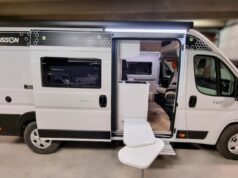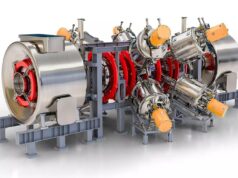The cabin is built with 3 x 20-foot shipping containers. The middle container is bolted to a cement block foundation using twist locks, and the two outer containers are cantilevered using lashing rods. He designed the cabin to take full advantage of the panoramic mountain view by covering almost an entire wall with windows, although he admits this is not the most energy efficient design.
source/image(PrtSc): Exploring Alternatives
He’s got 800 Watts of solar panels to power his 12-volt system for lights, outlets, and a water pump. He has a wood stove for heat, propane for the fridge, hot water, and cooktop, and he has a composting toilet from Sun-Mar.
source/image(PrtSc): Exploring Alternatives
For water, he has a well and a rainwater catchment system, and he uses both to fill 2 large water tanks for showering and washing dishes but he doesn’t yet have a filter for the rainwater and the well water is ferrous so he brings in drinking water for now.
Advertisement
One of the main challenges of building with shipping containers is trying to avoid water leaks along the seams where the containers are joined together. Once the clamps are in place, there’s a 3-inch gap between containers.
Adam installed a mechanical gutter along the seams on the roof to divert water off the roof, and he has a second gutter underneath it to catch any leaks from the first gutter. So far he hasn’t had any water issues.You can avoid leaks by building a roof over the containers.The cabin is insulated with spray foam insulation, which adheres to the steel walls and helps avoid condensation problems that might arise with fibreglass batts.












